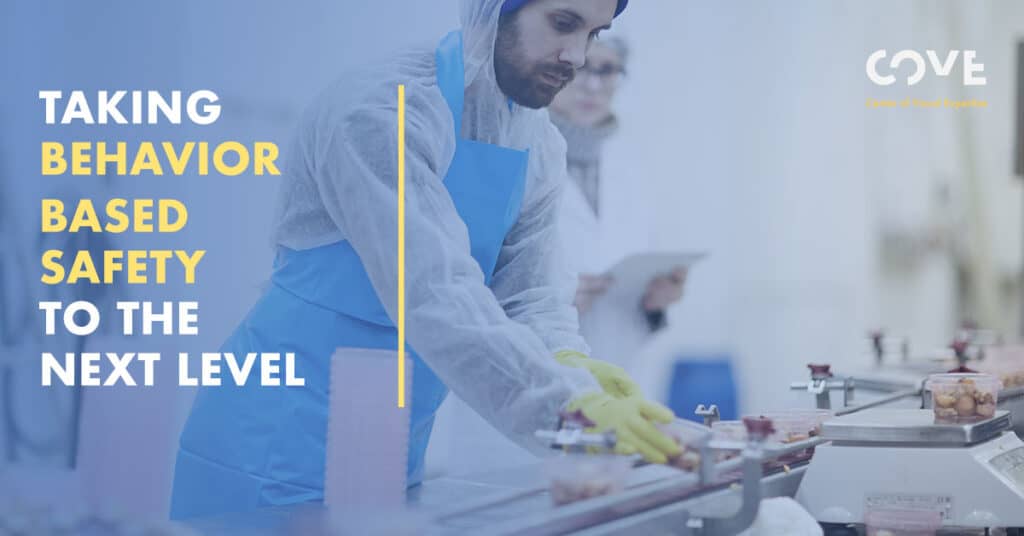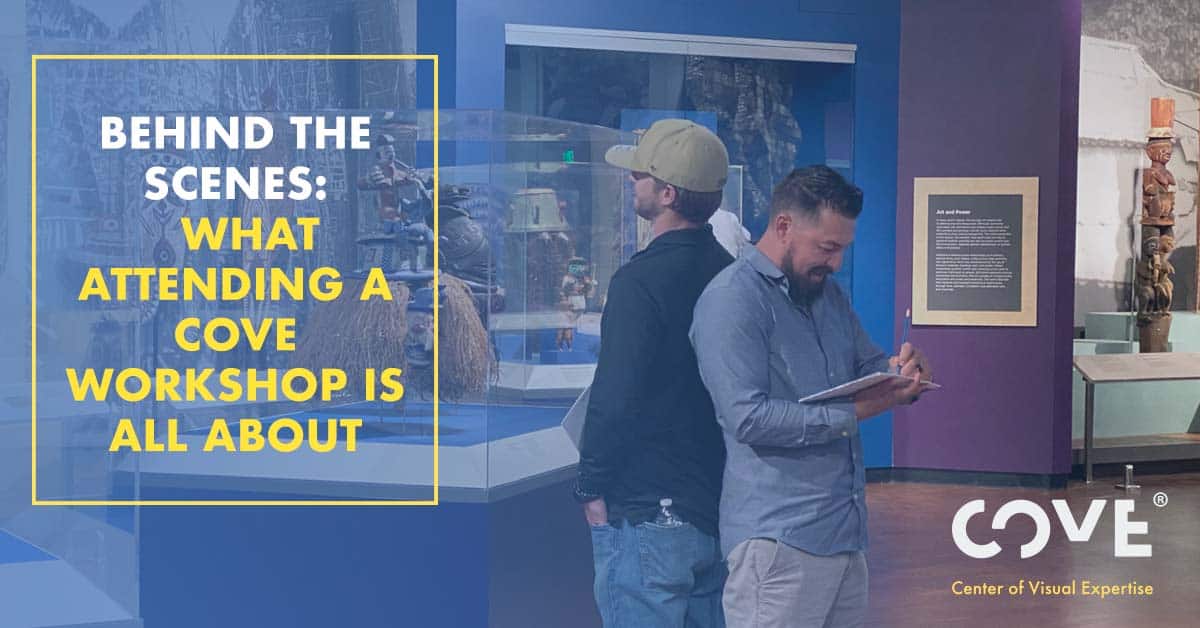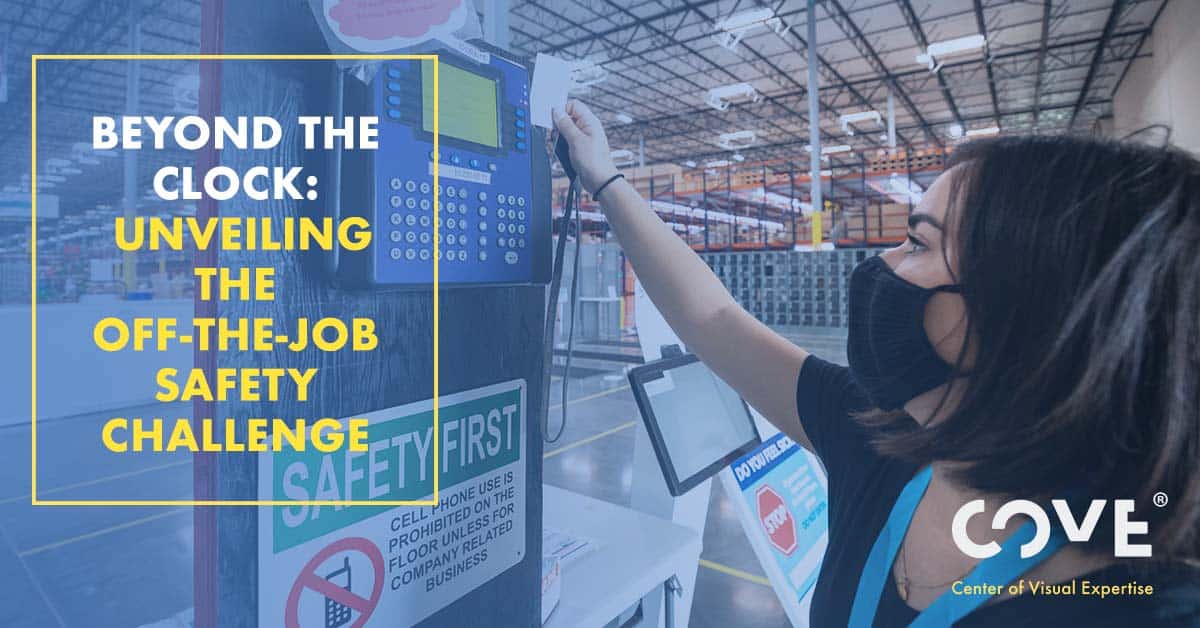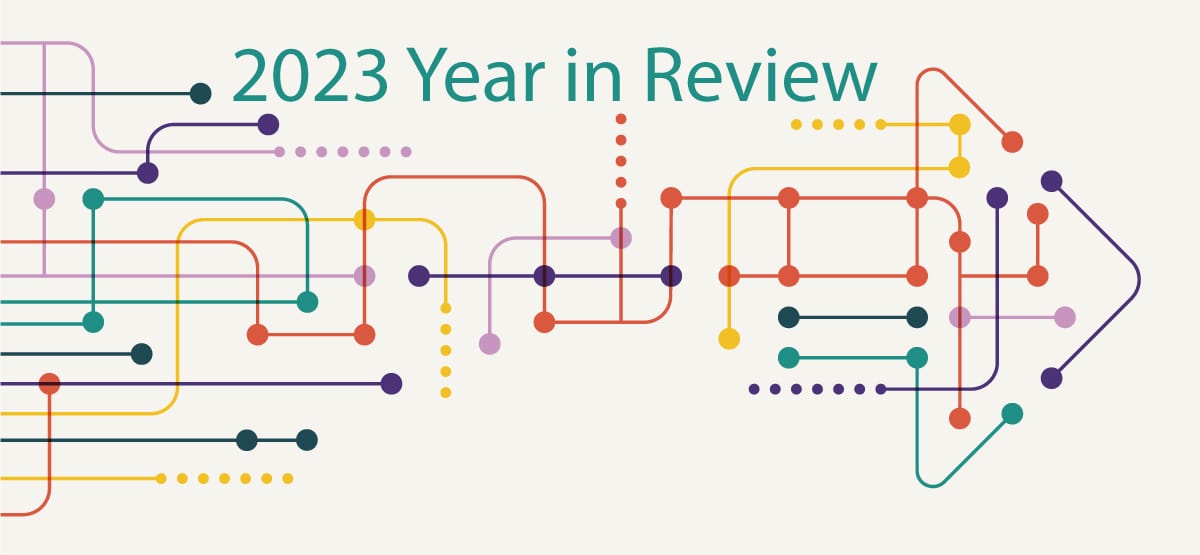Viewing and thinking about safety issues more deliberately and in a wider context, or Seeing the Whole PICTURE®, are keys to improving workplace safety performance. Behavior-based safety (BBS) implementations have long been used to upgrade safety and health performance. A recent white paper, Strengthening Behavior-Based Safety, Human Performance And Management Systems With Visual Literacy, examines how Visual Literacy and critical thinking can strengthen BBS tools. Here we provide an overview of the white paper.
Implemented for more than four decades, many BBS processes have become a rote exercise now, says Glenn Murray, advisory board member and senior client advisor for the Center of Visual Expertise (COVE). “Visual Literacy and its concepts give you a fresh, fun experience that is unique and can breathe new life into BBS processes which may be growing stale,” he says. Rolling out a BBS process enhanced by Visual Literacy can eliminate perceptions of “oh, we have another flavor of the month to deal with.”
The heart of BBS is making observations of employees’ safe and at-risk behaviors – “watching the work taking place,” as Murray says. Visual Literacy skills make managers, supervisors and front-line employees more effective at making observations by Seeing the Whole PICTURE®, using a more systemic way to perform observations, he says. “BBS doesn’t necessarily teach you how to see the whole picture. Over-reliance on checklists of behaviors to guide observations can introduce visual biases since they can ‘fence in’ or limit observations,” says Murray. “You can miss a lot.”
Using Visual Literacy tools (look, observe, see, describe, analyze, interpret and communicate) to assess behaviors and when needed correct at-risk behaviors is a more challenging, more fluid and dynamic scenario than merely looking for hazardous physical conditions, says Murray. You are also looking at how people move; their spacing; how crews work together; how fundamental leadership skills are exhibited; system factors that affect behavior (such as production pressure; work layouts); and how safety participation, communication, empowerment and ownership are promoted.
BBS 2.0, as defined in a 2021 paper by Dr. Josh Williams, partner, human performance and business transformation for the global management consulting firm Propulo Consulting, goes beyond behavioral observations and checklists. Putting too much emphasis on observation checklists can result in “pencil whipping,” he writes, completing checklist cards without making true observations for the sake of meeting card quotas. BBS 2.0 calls for the influence of system factors on behaviors to be acknowledged and addressed. BBS 2.0 also acknowledges the power individuals’ thoughts and feelings play in shaping behavior (“Attitudes drive behavior,” writes Williams).
Visual Literacy’s critical thinking skills come into play with the expanded scope of BBS 2.0. Sharpened seeing skills based on the Elements of Art – color, lines, space, shape and texture – improve observations of personal protection equipment (PPE) use; body position relating to tasks; posture; lifting; climbing; work at heights; repetitive tasks; hand-eye placement and focus on task; seat belt use and driving safety practices. System factors also can be observed and analyzed, such as the condition and placement of tools and equipment and the use of safety guards; electrical, mechanical, and thermal energy sources; slip, trip and fall hazards; chemical and flammable hazards; and housekeeping.
Visual Literacy’s emphasis on not only seeing but using critical thinking to describe, analyze, interpret, and communicate can be applied to improve the practices of more holistic BBS implementations. In COVE’s Visual Literacy training workshops, participants engage in exercises where they describe an object to a partner who cannot see the object but is asked to draw the object based on the description only. While thought of as a drawing exercise, it is really a communication exercise that reveals our challenges in communicating clearly with others and using a common language. Conversations, questioning, asking for input and problem-solving occur both in workshop one-on-one exercises and group discussions. Developing these abilities improves the conversation that should always follow observations. Probing with open-ended questions and listening attentively to what people are seeing, experiencing, and thinking improves risk assessments; risk mitigation; teamwork; safety participation and achievement recognition; and decision-making, ownership, and motivation.
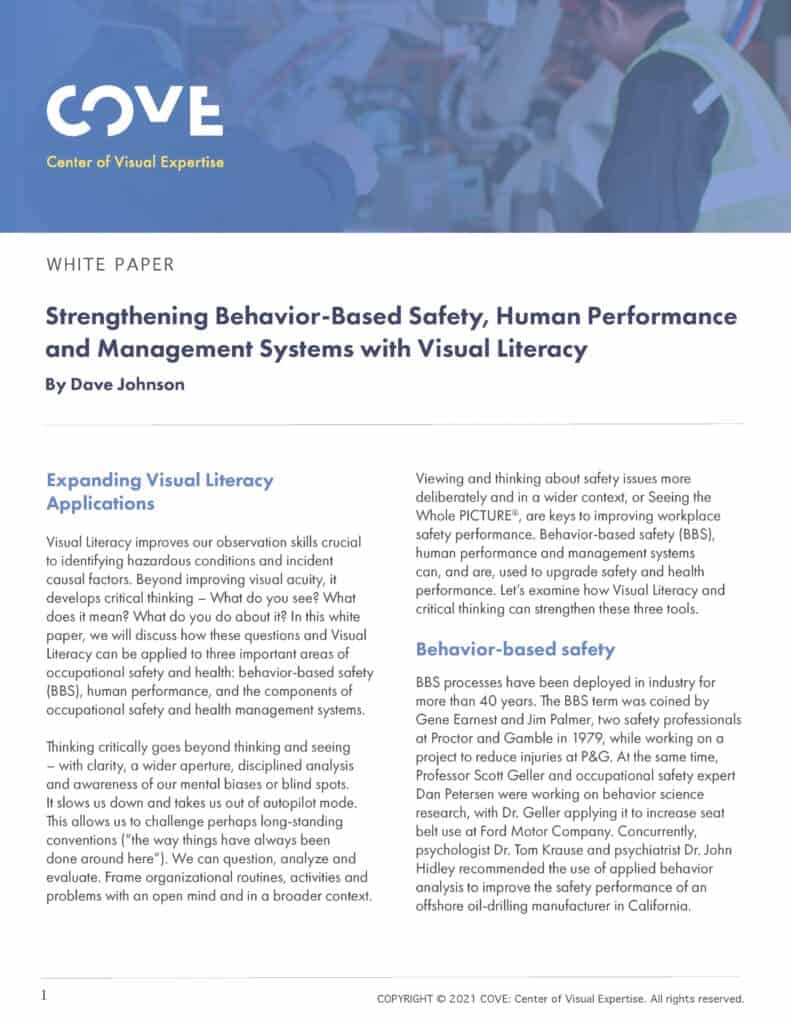
Download our latest white paper Strengthening Behavior-Based Safety, Human Performance And Management Systems With Visual Literacy, to learn about these new ideas on how to upgrade your safety and health performance.
